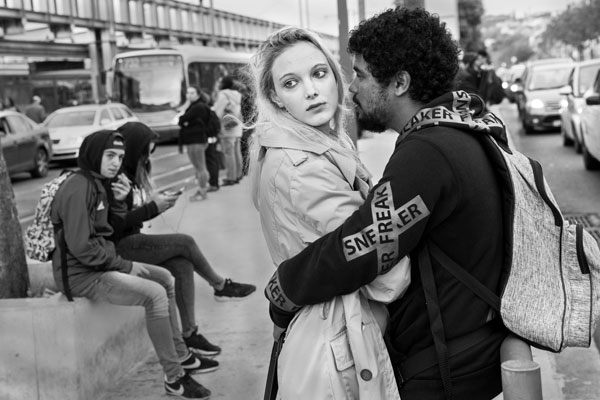The smart Trick of Framing Streets That Nobody is Talking About
The smart Trick of Framing Streets That Nobody is Talking About
Blog Article
Some Known Factual Statements About Framing Streets
Table of Contents7 Simple Techniques For Framing StreetsMore About Framing StreetsFraming Streets Things To Know Before You Get ThisThe Basic Principles Of Framing Streets The Buzz on Framing StreetsThe smart Trick of Framing Streets That Nobody is Discussing
Digital photography style "Crufts Pet dog Program 1968" by Tony Ray-Jones Road digital photography (additionally occasionally called honest photography) is digital photography carried out for art or inquiry that includes unmediated chance encounters and arbitrary incidents within public places, generally with the goal of capturing images at a definitive or emotional minute by cautious framework and timing. 
An Unbiased View of Framing Streets
Susan Sontag, 1977 Road digital photography can focus on individuals and their actions in public. In this regard, the road photographer is similar to social documentary photographers or photographers who additionally function in public areas, but with the goal of recording newsworthy events. Any of these professional photographers' pictures might catch individuals and residential property visible within or from public areas, which commonly involves navigating honest concerns and legislations of personal privacy, protection, and residential property.
Depictions of everyday public life develop a category in virtually every period of globe art, starting in the pre-historic, Sumerian, Egyptian and early Buddhist art periods. Art managing the life of the road, whether within views of cityscapes, or as the leading theme, appears in the West in the canon of the Northern Renaissance, Baroque, Rococo, of Romanticism, Realism, Impressionism and Post-Impressionism.
What Does Framing Streets Mean?
Louis Daguerre: "Blvd du Holy place" (1838 or 1839) In 1838 or 1839 the initial photograph of figures in the street was tape-recorded by Louis-Jacques-Mand Daguerre in among a set of daguerreotype sights extracted from his studio home window of the Boulevard du Holy place in Paris. The 2nd, made at the height of the day, shows an unpopulated stretch of road, while the other was taken at regarding 8:00 am, and as Beaumont Newhall reports, "The Boulevard, so frequently loaded with a moving bunch of pedestrians and carriages was completely solitary, other than an individual who was having his boots combed.
Consequently his boots and legs were well specified, however he is without body or head, since these remained in activity." Charles Ngre, waterseller Charles Ngre. https://framingstreets1.godaddysites.com/f/framing-streets-mastering-the-art-of-street-photography was the initial photographer to obtain the technical class called for to register people in activity on the street in Paris in 1851. Photographer John Thomson, a Scotsman working with journalist and social activist Adolphe Smith, released Street Life in London in twelve regular monthly installments beginning in February 1877
Framing Streets Fundamentals Explained
Eugene Atget is considered as a progenitor, not due to the fact that he was the very first of his kind, yet as a result of the popularisation in the late 1920s of his document of Parisian streets by Berenice Abbott, that was motivated to take on a comparable paperwork of New york city City. [] As the city created, Atget assisted to advertise Parisian streets as a worthy subject for digital photography.

Fascination About Framing Streets
Martin is the initial videotaped digital photographer to do so in London with a masked electronic camera. Mass-Observation was a social research organisation established in 1937 which intended to videotape day-to-day life in Britain and to tape the responses of the 'man-in-the-street' to King Edward VIII's abdication in 1936 to wed separation Wallis Simpson, and the succession of George VI. Between 1946 and 1957 Le Groupe des XV yearly showed work of this kind. Andre Kertesz. Circus, Budapest, 19 May 1920 Road photography created the major content of 2 exhibits at the Gallery of Modern Art (Mo, MA) in New york city curated by Edward Steichen, 5 French Professional Photographers: Brassai; Cartier-Bresson, Doisneau, Ronis, Izis in 1951 to 1952, and Post-war European Digital Photography in 1953, which exported the idea of road digital photography globally.

Indicators on Framing Streets You Should Know
The recording maker was 'a surprise cam', a 35 mm Contax concealed under his layer, that was 'strapped to the breast and attached to a lengthy wire strung down the right sleeve'. His work had little contemporary impact as due to Evans' sensitivities about the originality of his project and the privacy of his topics, it was not released up until 1966, in the book Lots of Are Called, with an introduction created by James Agee in 1940.
Helen Levitt, then an educator of young kids, related to Evans in 193839. She documented the transitory chalk drawings - photography presets that were part of youngsters's street society in New York at the time, as well as the youngsters who made them. In July 1939, Mo, MA's new digital photography area consisted of Levitt's work in its inaugural eventRobert Frank's 1958 publication,, was significant; raw and commonly out of emphasis, Frank's pictures examined mainstream digital photography of the moment, "challenged all the official policies laid down by Henri Cartier-Bresson and Walker Evans" and "contradicted the wholesome pictorialism and sincere photojournalism of American magazines like LIFE and Time".
Report this page